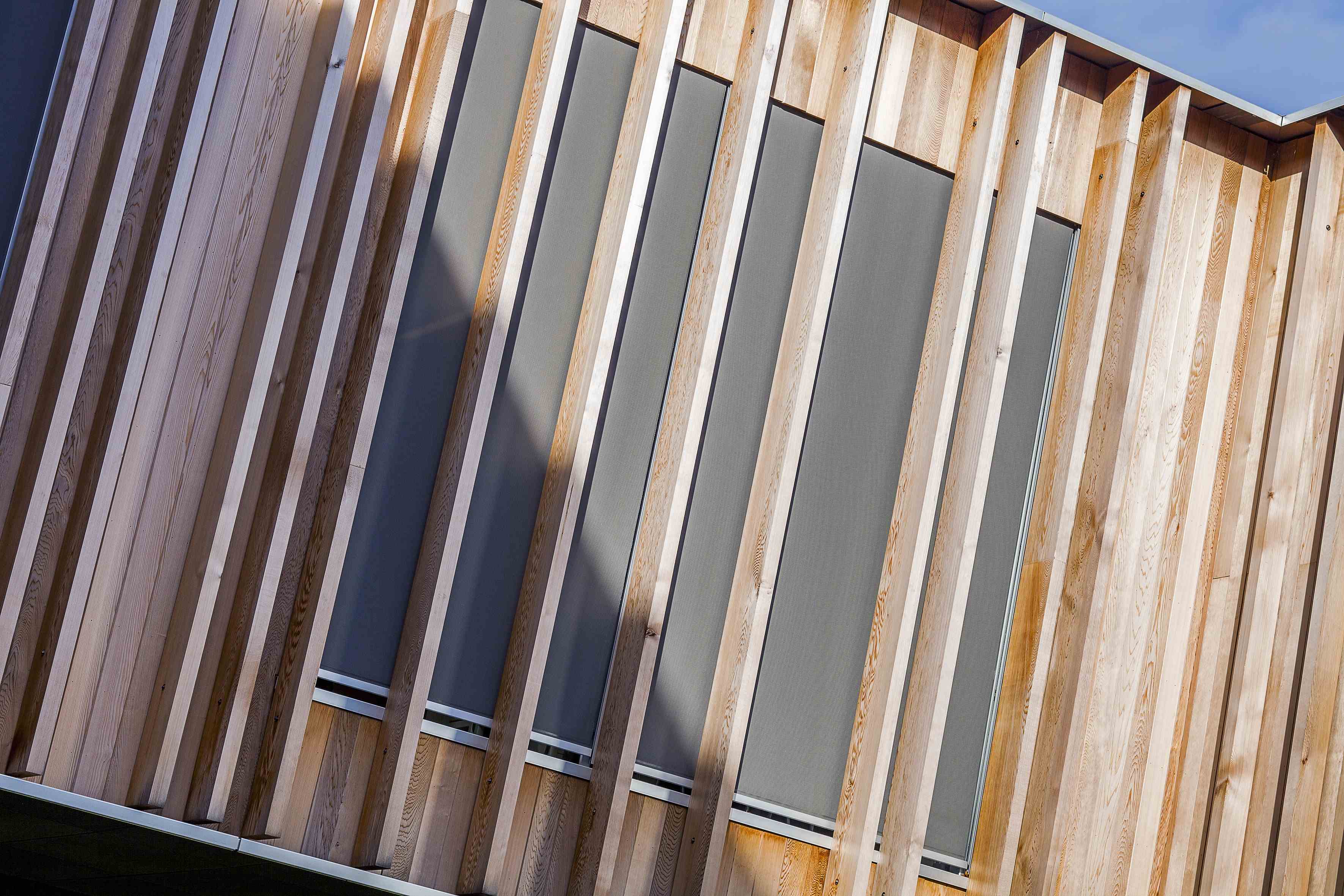At Helioscreen, we test our fabrics to the limit. Before a fabric is launched on the market, it is examined in detail and evaluated on all important aspects.
One of the first questions we ask is whether the fabric can be made up properly and is compatible with the most commonly used made-to-measure finishes. If so, we make covers in different sizes and evaluate them on a test wall. For outdoor solar shading, we do this in various weather conditions.
We sometimes complain about our Belgian weather with freezing temperatures one week and warm spring weather the next. But it does enable us to see how our fabric behaves under these different conditions in comparison to other types of fabric.
For us, however, it doesn't stop with good results on the test wall. An independent lab tests the strengths and weaknesses at the same time: the fabric is pulled and ripped to make it break and tear. It is exposed to intense Xenon lights for hours and finally even set on fire.
These tests provide us with essential information that helps the blind manufacturers to choose the right rollertube and the ideal bottom bar.
We also check how well the fabric protects against heat and glare and how it preserves the view to the outside. Here, too, we entrust the measurements to an independent laboratory.
The results are also peer-reviewed by our colleagues at the European Solar Shading Organisation (ES-SO). Once approved, they are entered into the ES-SO database ES-SDA (www.es-so-database.com). This shows that designing fabric is also a bit of science.
Sergé 1%
One of the fabrics that we developed in this way was our Sergé 1%. It does not have the same appearance as our Sergé 3%, precisely because we were looking for an ideal fabric for zip applications. It is therefore slightly thinner and lighter than the well-known outdoor screens. However, it has a smaller openness, which means that glare is counteracted even more efficiently and heat reflection is just a tad better.
Our darkening Xinix and the waterproof D-light were derived from it because of these advantages. They too are ideal for use with a zip.
In short: time and again, the tests show that our Sergé fabrics are very strong thanks to their fibreglass core and hang tightly and stably on the zipscreen. Moreover, they offer a perfect compromise between transparency, daylight filtering and privacy. A number of colours even achieve the highest classes for heat retention and protection against glare in accordance with the European standard EN 14501.
There is also plenty of choice for the user, as there are more than 30 colours in the Sergé collection. Many of these are available in different widths to minimise cutting loss.
As you can see, we keep the fabricator, the screen manufacturer and the end customer happy.






